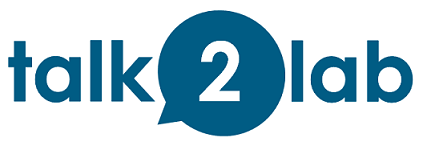The Talk2Lab system was created to bring our laboratory environments into the 21st Century, through the use of IoT devices and connected technology. Whilst the adoption of smart technology and voice activated assistants has increased drastically in the home environment (especially since the emergence of devices such as the Amazon Echo and Google Home); our labs are still lagging behind this movement. There are countless use cases for IoT devices within the laboratory, as there are many situations where scientists need access to systems or data in the lab from external locations, or where they need to access information but are in the middle of an experiment or risk contaminating their technology with hazardous substances.
There are laboratories that have implemented connected systems; however, these are mostly in the form of industrial laboratories which utilise LIMS (Laboratory Information Management System) and ELN (Electronic Lab Notebook) systems to link up their equipment and manage their data, helping them to adhere to the stringent regulations and requirements. An early example of this work in research environments is the Smart Tea Project [1] which was carried out by members of the Frey group and colleagues in the Electronics and Computer Science department at the University of Southampton, as part of the e-science programme. This project used the process of making tea as an analogy for a chemical experiment in an attempt to better understand the experimental recording process, with a look to create a digital recording system for the lab that permitted chemists to interact with it in a similar way to how they interact with their paper lab notebooks. This early work included linking experiment plans with a tablet interface to facilitate quicker data entry during experiments [2].
More recent work has been done in this area to develop a prototype system incorporating an ELN which linked to electronic devices used in experiments [3]. Research from the Frey group also demonstrated that there are many barriers to adoption to using computers or laptops in the laboratory, such as concerns about cost, suitability for use and the potential for damage [4]. However, the use of IoT and voice in the lab would be substantially less intrusive as scientists could ‘talk’ directly to the lab rather than participating in a physical interaction. This work builds on research carried out previously in the Frey group in which the idea of a fully automated lab was proposed where instruments can `talk to each other’. [5] This was expanded with work trialling IBM’s middleware software to link up to sensors in a lab. [6, 7].
[1] m . c. schraefel, G. Hughes, H. Mills, G. Smith, and J. G. Frey, Making Tea: Iterative Design Through Analogy, in ‘Proceedings of the 5th Conference on Designing Interactive Systems: Processes, Practices, Methods, and Techniques’, ACM, pages 49–58, 2004.
[2] G. Hughes, H. Mills, D. De Roure, J. G. Frey, L. Moreau, m. c. schraefel, G.Smith, and E. Zaluska. The semantic smart laboratory: a system for supporting the chemical eScientist. Org. Biomol. Chem., 2(22):3284-3293, 2004.
[3] D. S. Lutjohann, N. Jung, and S. Brase. Open source life science automation: Design of experiments and data acquisition via “dial-a-device”. Chemom. Intell. Lab. Syst., 144:100-107, 2015.
[4] S. Kanza, C. Willoughby, N. Gibbins, R. Whitby, J. G. Frey, J. Erjavec, K. Zupančič, M. Hren, and K.Kovač. Electronic Lab Notebooks: Can they Replace Paper? Journal of Cheminformatics., 9(31):31. 2017
[5] J. G. Frey. Dark Lab or Smart Lab : The Challenges for 21st Century Laboratory Software. Org. Process Res. Dev., 8:1024-1035, 2004
[6] S. Wilson and J. Frey. The SmartLab: Experimental and environmental controland monitoring of the chemistry Laboratory. 2009 Int. Symp. Collab. Technol. Syst. CTS 2009, pages 85-90, 2009.
[7] J. M. Robinson, J. G. Frey, A. J. Standford-Clark, A. D. Reynolds, and B. V.Bedi. Sensor Networks and Grid Middleware for Laboratory Monitoring. In First Int. Conf. e-Science Grid Comput., Melbourne, Vic., 2005.

